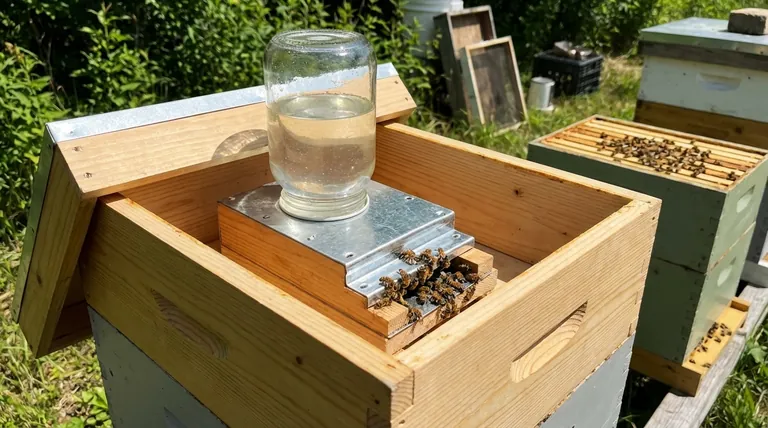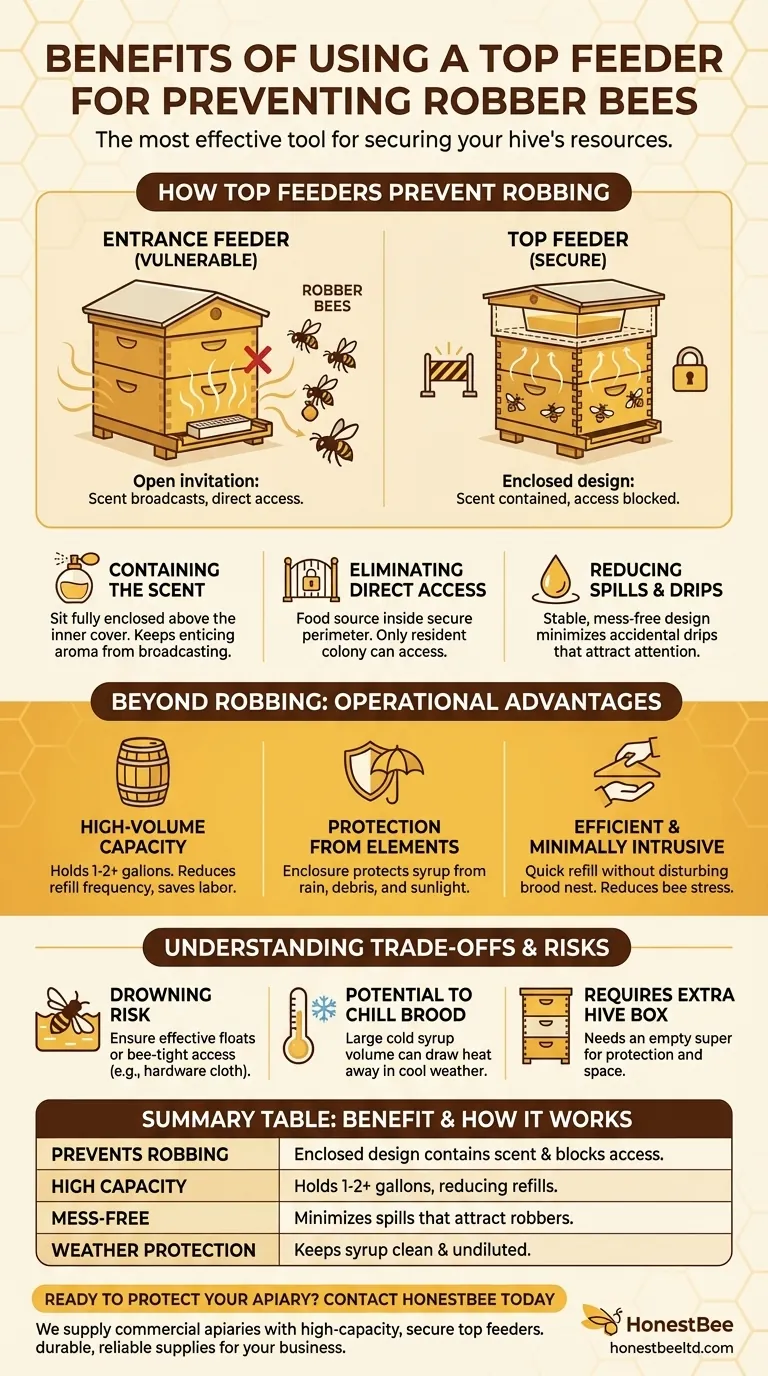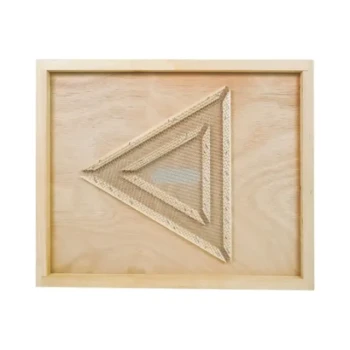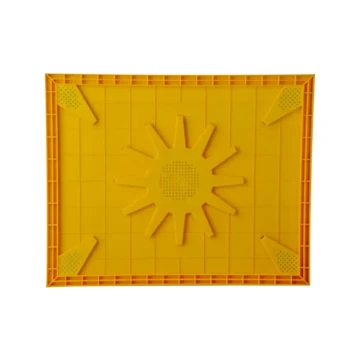Yes, top feeders are one of the most effective tools for preventing robber bees. Because the entire feeding station is enclosed within the hive, it contains the scent of the syrup and physically blocks access from outside bees. This design directly contrasts with entrance feeders, which place the food source at the front door of the hive, acting as an open invitation to robbers from other colonies.
The fundamental advantage of a top feeder is its enclosed design. By keeping the syrup's aroma and access contained within the hive, it makes your colony virtually invisible to would-be robber bees, which is a critical step in protecting your colony's resources and population.

How Top Feeders Prevent Robbing
A top feeder's effectiveness against robbing comes down to its core design, which mitigates the primary triggers of this destructive behavior.
Containing the Scent
Robbing is primarily triggered by the smell of a readily available food source. A top feeder sits above the inner cover, fully enclosed by an empty hive box and the outer cover. This containment strategy keeps the enticing aroma of sugar syrup from broadcasting to nearby hives.
Eliminating Direct Access
Entrance feeders, by definition, position the syrup at the most vulnerable point of the hive. This essentially advertises a free meal. Top feeders place the food source inside the hive's secure perimeter, meaning only the bees of that colony can access it.
Reducing Spills and Drips
Modern top feeders are designed to be a mess-free solution. Spilled syrup around the hive entrance is a major catalyst for robbing frenzies. The stable, enclosed nature of a top feeder minimizes the chance of accidental drips that would otherwise attract unwanted attention.
Beyond Robbing: The Operational Advantages
While preventing robbing is a primary benefit, top feeders offer several other advantages that make them a preferred choice for many beekeepers.
High-Volume Capacity
Top feeders hold a significant amount of syrup, often one to two gallons or more. This large capacity reduces the frequency of refills, saving you time and labor—a significant benefit if you manage multiple hives or your apiary is far from home.
Protection from the Elements
The feeder's enclosure protects the syrup from being diluted by rain, contaminated by debris, or degraded by direct sunlight. This ensures the bees receive a clean and consistent food source.
Efficient and Minimally Intrusive
Refilling a top feeder is quick and efficient. You can simply lift the outer cover and pour in more syrup without significantly disturbing the colony's brood nest below. This reduces stress on the bees.
Understanding the Trade-offs and Risks
No tool is perfect. To use a top feeder safely and effectively, you must be aware of its potential downsides.
The Critical Risk of Drowning
This is the most significant risk associated with top feeders. If bees can access the main syrup reservoir, they will drown in large numbers. Ensure your feeder has effective floats or that any access points, like hardware cloth, are completely "bee tight" so they can feed safely without falling in.
Potential to Chill the Brood
In cooler weather, adding a large volume of cold syrup to the top of the hive can act as a "cold sink," drawing heat away from the brood nest below. This can stress the colony as they work harder to maintain temperature. Consider this when feeding during early spring or late fall.
Requires an Extra Hive Box
A top feeder requires an empty hive box (a super) to be placed around it for protection and to create the necessary space for the outer cover to fit. This is a minor consideration but does add to the equipment you need for each hive.
Making the Right Choice for Your Goal
Your feeding strategy should align with your specific objectives and the current condition of your colony.
- If your primary focus is preventing robbing: The enclosed design of a top feeder is your most reliable and secure option.
- If your primary focus is feeding a large apiary with minimal labor: The high capacity of top feeders makes them the most efficient choice for reducing trips and workload.
- If you are feeding during cold weather: Be mindful of the syrup temperature and consider using a smaller in-hive feeder for very small colonies to avoid chilling the cluster.
By properly setting it up and understanding its function, the top feeder becomes an indispensable tool for building a strong, well-fed, and secure honey bee colony.
Summary Table:
| Benefit | How It Works |
|---|---|
| Prevents Robbing | Enclosed design contains syrup scent and blocks physical access to robber bees. |
| High Capacity | Holds 1-2+ gallons of syrup, reducing refill frequency and saving labor. |
| Mess-Free | Minimizes spills and drips that attract robbers. |
| Weather Protection | Keeps syrup clean and undiluted from rain and debris. |
Ready to protect your apiary with the most effective feeding equipment?
At HONESTBEE, we supply commercial apiaries and beekeeping equipment distributors with high-capacity, secure top feeders designed to prevent robbing and maximize operational efficiency. Our wholesale-focused operations ensure you get the durable, reliable supplies your business needs.
Contact our team today to discuss your requirements and discover how our beekeeping solutions can help you build stronger, more secure colonies.
Visual Guide

Related Products
- Boardman Entrance Bee Feeder Durable Galvanized Steel and Wood Construction for Beekeeping
- Professional Hive Top Bee Feeder for Beekeeping
- Professional Hive Front Entrance Bee Feeder
- Classic Boardman Entrance Bee Feeder Hive Front Feeding Solution
- HONESTBEE Professional Hive Top Bee Feeder Feeding Solution
People Also Ask
- How does an entrance feeder work? A Guide to Its Simple Mechanics and Risks
- What is an entrance feeder? A Guide to Its Simple Design and High Robbing Risk
- What is an entrance feeder and how is it used? Avoid the Critical Risk of Robbing
- How to make an entrance feeder for bees? A DIY Guide for Safe & Effective Feeding
- Are entrance feeders good for bees? Prioritize Hive Health Over Convenience



















